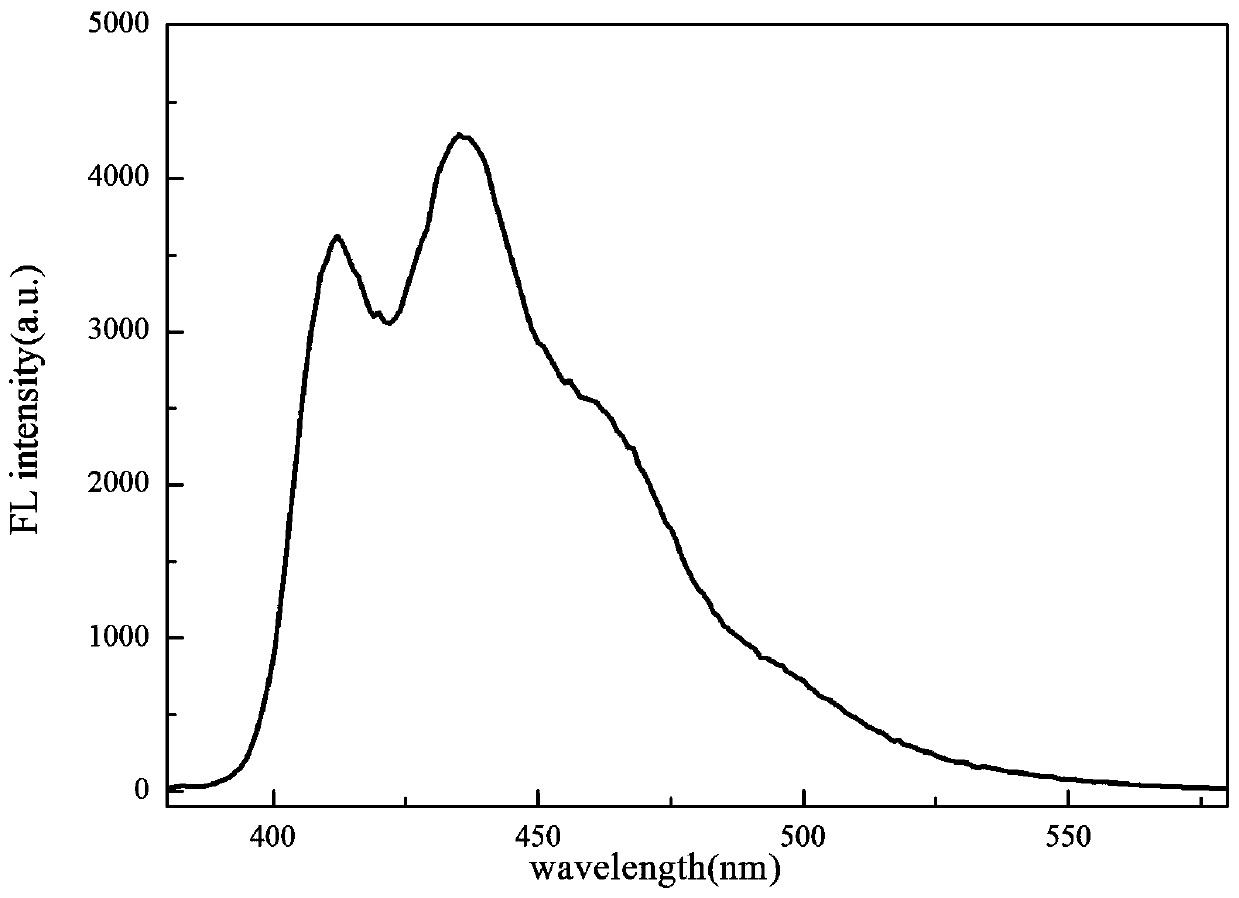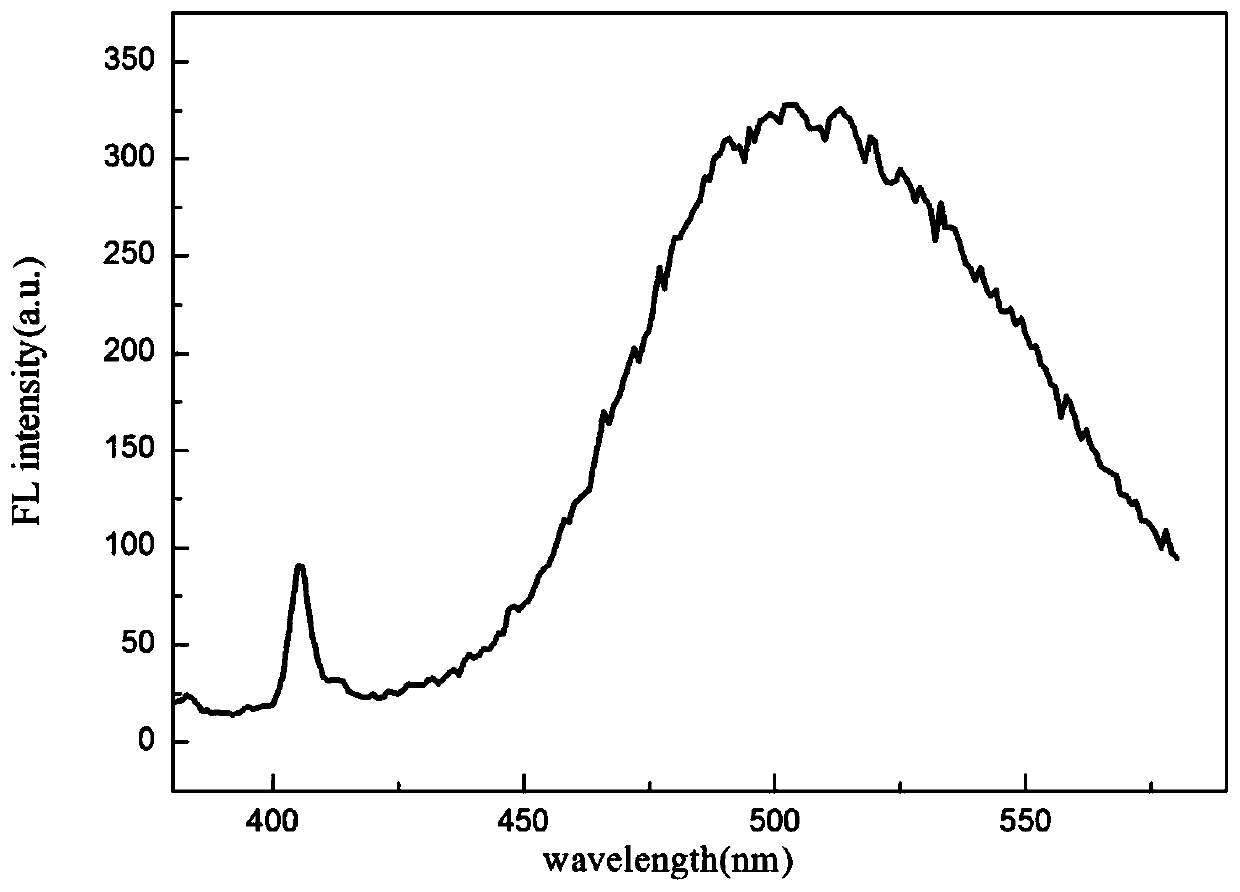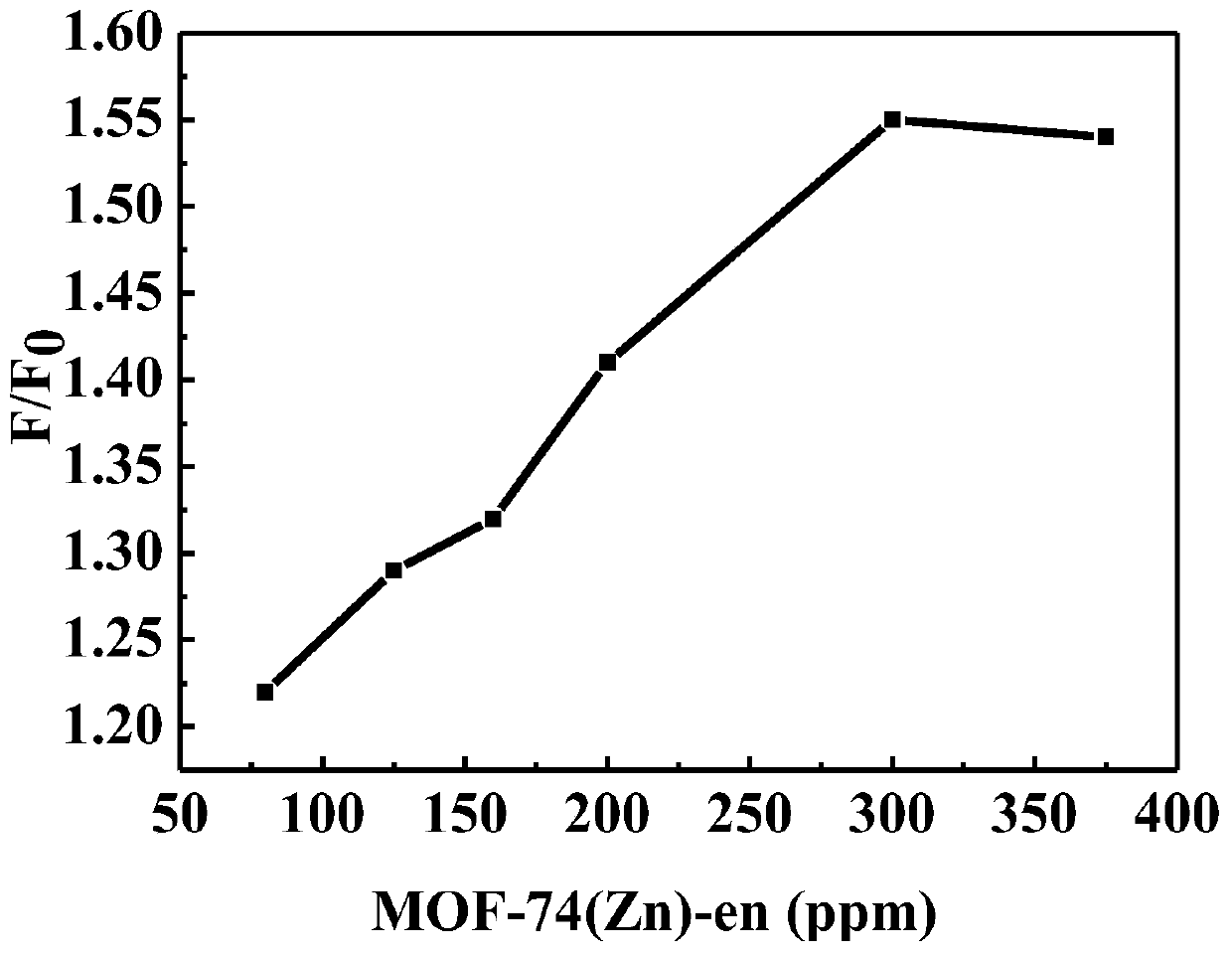MOFs fluorescence probe for detecting tetrabromobisphenol A, preparation method and application
A fluorescent probe, tetrabromobisphenol technology, applied in the directions of fluorescence/phosphorescence, chemical instruments and methods, luminescent materials, etc., can solve the problems of high cost, complicated instruments and equipment, limited wide application, etc., and achieves low cost and preparation. The method is simple and the application prospect is good
- Summary
- Abstract
- Description
- Claims
- Application Information
AI Technical Summary
Problems solved by technology
Method used
Image
Examples
preparation example Construction
[0040] A kind of preparation method of described MOFs fluorescent probe that is used to detect tetrabromobisphenol A comprises the following steps:
[0041] Preparation of S1, MOF-74(Zn)
[0042] Dissolve 2,5-dihydroxyterephthalic acid and divalent zinc salt or divalent zinc salt hydrate in DMF solution respectively, then slowly add 2,5-dihydroxyterephthalic acid solution to divalent zinc salt or divalent zinc salt hydrate solution, stirred at room temperature to obtain yellow solid MOF-74 (Zn), cleaned;
[0043] Preparation of S2, MOF-74(Zn)-en
[0044]The cleaned MOF-74(Zn) was added to the solution of ethylenediamine(en), stirred at room temperature, filtered, washed and dried at room temperature to obtain the fluorescent probe MOF-74(Zn)-en.
[0045] Preferably, the molar ratio of 2,5-dihydroxyterephthalic acid and divalent zinc salt or divalent zinc salt hydrate described in step S1 is (0.8-1.2):(2.5-3.7); preferably 1.2: 3.12;
[0046] In the step S2, every 131 mg of...
Embodiment 1
[0061] The preparation method of MOFs fluorescent probe comprises the following steps:
[0062] Preparation of S1, MOF-74(Zn)
[0063] 2,5-dihydroxyterephthalic acid (239mg, 1.20mmol) and Zn(OAc) 2 2H 2 O (686 mg, 3.12 mmol) was dissolved in 20 ml of DMF solution, and then 2,5-dihydroxyterephthalic acid solution was slowly added to Zn(OAc) 2 2H 2 O solution, stirred at room temperature for 18 h to obtain 269.5 mg of yellow solid MOF-74(Zn), which was cleaned.
[0064] The cleaning method of MOF-74 (Zn) in the described step S1 comprises the following steps:
[0065] S11. Wash 100 mg of freshly prepared MOF-74(Zn) three times with 20 ml of N,N-dimethylformamide (DMF), and then soak in 20 ml of methanol solution to remove the MOFs-74(Zn) The residual ligand 2,5-dihydroxyterephthalic acid and DMF should be dried at room temperature at 20-30°C.
[0066] S12. Soak the MOF-74(Zn) obtained in step S11 in 20ml of water at a temperature of 20-30°C for 30min to remove the supernat...
Embodiment 2
[0071] To explore the influence of MOF-74(Zn)-en concentration, the sensitivity detection of TBBPA (150ppb) by MOF-74(Zn)-en solutions with concentrations of 80, 100, 125, 160, 200, 300, and 375ppm was studied respectively. like image 3 As shown, the photoluminescence enhancement rate (expressed by F / F0, where F0 and F are the photoluminescence intensity before and after adding TBBPA respectively) increases with the concentration of MOF-74(Zn)-en solution in the range of 80-300ppm , and then the enhancement factor decreases slightly as the concentration increases, so MOF-74(Zn)-en has the highest selectivity at 300ppm. Therefore, in further research, 300ppm MOF-74(Zn)-en solution was finally selected for the determination of TBBPA.
PUM
 Login to View More
Login to View More Abstract
Description
Claims
Application Information
 Login to View More
Login to View More - R&D
- Intellectual Property
- Life Sciences
- Materials
- Tech Scout
- Unparalleled Data Quality
- Higher Quality Content
- 60% Fewer Hallucinations
Browse by: Latest US Patents, China's latest patents, Technical Efficacy Thesaurus, Application Domain, Technology Topic, Popular Technical Reports.
© 2025 PatSnap. All rights reserved.Legal|Privacy policy|Modern Slavery Act Transparency Statement|Sitemap|About US| Contact US: help@patsnap.com



